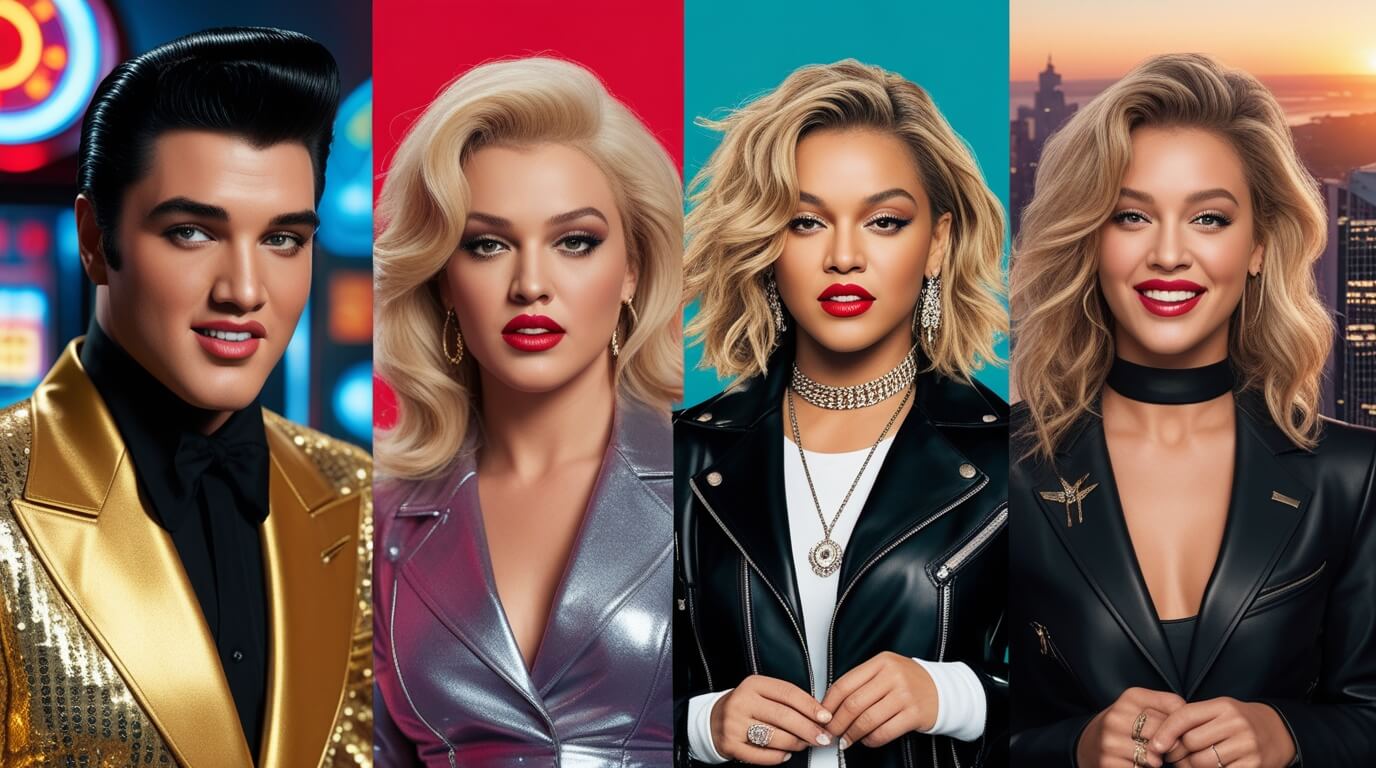The Evolution of Pop Music- A Journey Through Decades

1950s – The Birth of Modern Pop
- The 1950s laid the foundation for contemporary pop music. The era was marked by a cultural shift following World War II, with mass media becoming central to everyday life. This decade introduced the first real "teenagers" as a consumer group—and with them, a demand for music that spoke to youth identity.
- Cultural Context
- The rise of television and radio brought artists into homes across America.
- The music industry transitioned from big-band jazz to solo artists with more intimate vocal styles.
- Rock and roll symbolized rebellion and youth freedom.
- Notable Subgenres:
- Rockabilly
- Doo-wop
- Traditional pop
- Notable Artists: Frank Sinatra, Elvis Presley, Chuck Berry, Nat King Cole
- Key Hits: “Jailhouse Rock,” “Love and Marriage,” “Rock Around the Clock”
1960s – The British Invasion and Counterculture
- The 1960s saw a massive musical revolution. As civil rights, anti-war protests, and counterculture movements gained steam, pop music became a vehicle for expression, experimentation, and empowerment.
- Cultural Context
- The Beatles changed the global music landscape with songwriting innovation and experimentation.
- Motown provided a platform for Black artists and polished soul-pop for mass audiences.
- Psychedelic music and political lyrics defined the later years of the decade.
- Notable Subgenres:
- Motown/Soul
- Psychedelic Pop
- Baroque Pop
- Notable Artists: The Beatles, The Supremes, The Beach Boys, Bob Dylan
- Key Hits: “Hey Jude,” “You Can’t Hurry Love,” “Good Vibrations”
- Further Reading: A Beginner’s Guide to Music Genres
1970s – Disco Fever and Soft Rock
- In the 1970s, pop music diversified dramatically. As glam rock and disco hit the dance floors, soft rock brought introspective ballads to the airwaves. Technology also played a role: multitrack recording and synthesizers expanded creative possibilities.
- Cultural Context
- Nightclubs and discotheques flourished in urban culture.
- Women gained more prominence in pop with acts like Donna Summer and Carole King.
- The singer-songwriter movement added depth and storytelling to mainstream music.
- Notable Subgenres:
- Disco
- Soft Rock
- Funk
- Glam Rock
- Notable Artists: ABBA, Elton John, Bee Gees, Fleetwood Mac
- Key Hits: “Dancing Queen,” “Your Song,” “Stayin’ Alive”
- Explore More: The Ultimate Beginner’s Music Learning Checklist
1980s – The MTV Generation and Synth-Pop
- The 1980s redefined pop visually and sonically. The launch of MTV in 1981 transformed pop stars into multimedia icons. Synthesizers, drum machines, and bold fashion became key elements of pop’s identity.
- Cultural Context
- Music videos became marketing tools as well as artistic statements.
- Pop artists became global brands through image, fashion, and music.
- Electronic instruments took over production.
- Notable Subgenres:
- Synth-Pop
- New Wave
- Dance-Pop
1990s – Teen Pop, R&B, and Hip-Hop Fusion
- The ’90s brought emotional depth and polished production to pop, combining R&B vocals, hip-hop rhythms, and bubblegum pop appeal. Music videos continued to dominate, and youth-centered pop reached commercial heights.
- Cultural Context
- MTV’s TRL (Total Request Live) helped launch and maintain teen pop careers.
- Hip-hop culture began influencing mainstream pop lyrics, style, and beats.
- Boy bands and girl groups captivated global audiences.
- Notable Subgenres:
- Teen Pop
- Hip-Pop (Pop + Hip-Hop)
- Contemporary R&B
- Notable Artists: Britney Spears, Mariah Carey, TLC, Backstreet Boys
- Key Hits: “…Baby One More Time,” “Waterfalls,” “I Want It That Way”
2000s – The Digital Revolution and Genre Fusion
- The 2000s reshaped music distribution and discovery. iPods, Napster, and iTunes changed how we consumed music, while pop fused more with hip-hop, R&B, and electronic dance music (EDM).
- Cultural Context
- The shift from CDs to digital downloads changed music business models.
- Autotune and vocal editing became widespread in mainstream pop.
- Artists used social media to connect directly with fans.
- Notable Subgenres:
- Dance-Pop
- Electropop
- Crunk-Pop
- Notable Artists: Beyoncé, Justin Timberlake, Rihanna, Usher
- Key Hits: “Crazy in Love,” “Umbrella,” “Yeah!”
- Further Reading: Understanding Audio Interfaces
2010s – Global Pop and Streaming Dominance
- The 2010s exploded with global influences, thanks to streaming platforms like Spotify and Apple Music. Viral content, curated playlists, and fan-driven momentum launched artists to fame worldwide.
- Cultural Context
- YouTube and TikTok changed music discovery forever.
- Cross-cultural collaborations (e.g., Latin + English, K-pop + Western pop) became the norm.
- Indie artists gained power through DIY production and online promotion.
- Notable Subgenres:
- Indie Pop
- K-pop
- Trap-Pop
- Notable Artists: Taylor Swift, BTS, Ed Sheeran, Billie Eilish
- Key Hits: “Shape of You,” “Dynamite,” “Bad Guy”
2020s – Pop in the Post-Streaming Era
- In the 2020s, short-form content platforms like TikTok now influence the trajectory of songs and artists. Genre lines blur more than ever, and social issues are increasingly embedded in lyrics.
- Current Trends:
- TikTok trends dictate chart-topping singles.
- Independent artists leverage platforms like Bandcamp and Patreon.
- Cross-genre and cross-language collaborations dominate.
- Emerging Subgenres:
- Hyperpop
- Bedroom Pop
- Alt-Pop
- Notable Artists: Olivia Rodrigo, Doja Cat, The Weeknd, Bad Bunny
- Key Hits: “drivers license,” “Blinding Lights,” “Dakiti”
Final Notes: A Soundtrack to Human Change
Pop music is more than catchy choruses and chart numbers—it’s a cultural chronicle. From vinyl records to streaming playlists, each pop evolution tells us something about the world around us: our hopes, our struggles, and the rhythms that bring us together.
As technology and tastes continue to change, pop music will evolve once again—but its core essence will remain: connection, creativity, and cultural reflection.